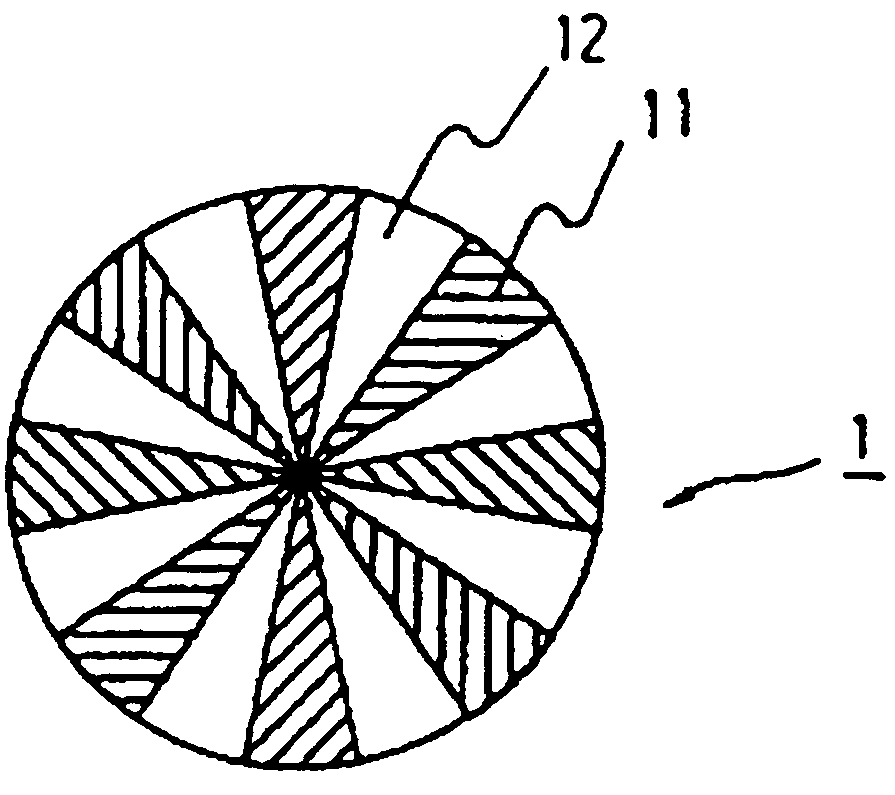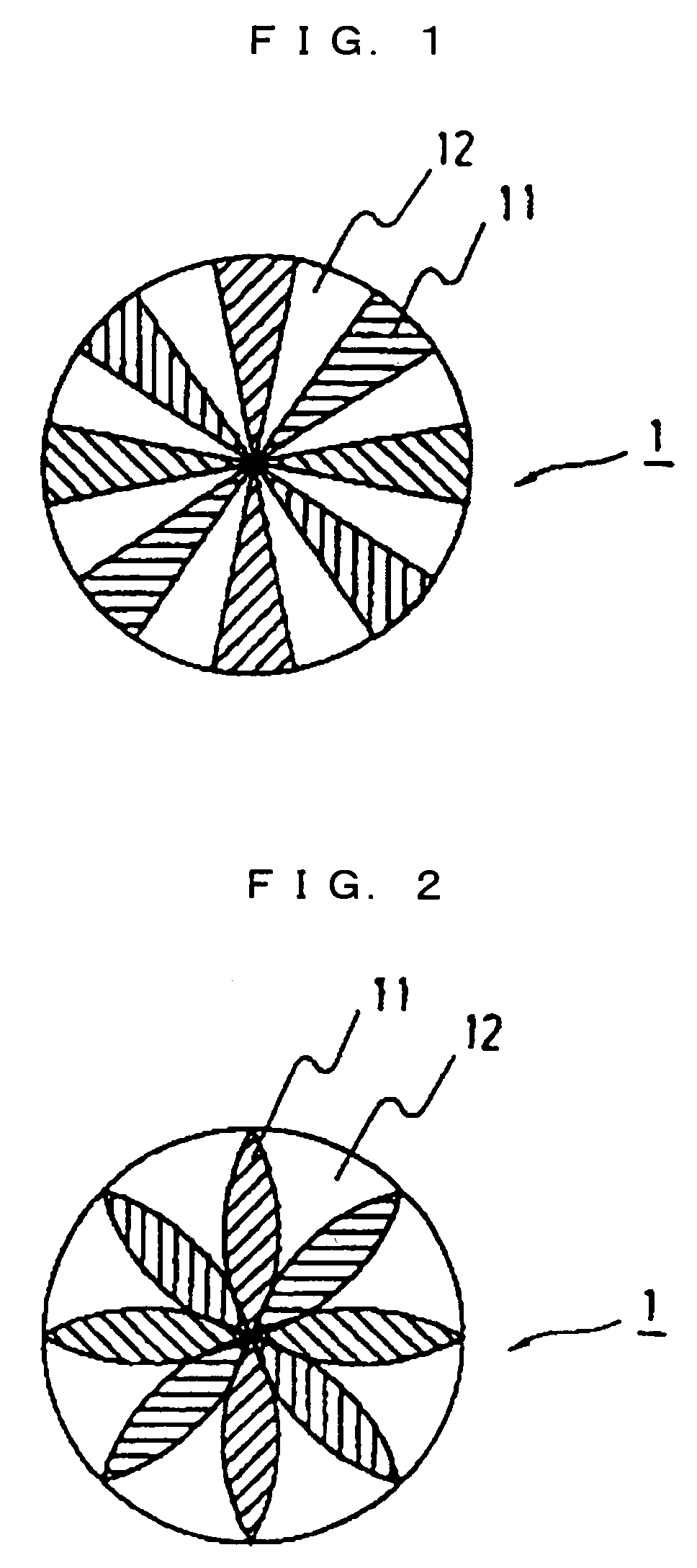Battery separator and battery comprising same
a battery separator and separator technology, applied in the field of battery separator and battery, can solve the problems of easy short circuit and small space between electrodes, and achieve the effects of preventing short circuits, high electrolyte holding capacity, and poor dispersion of superfine fibers
- Summary
- Abstract
- Description
- Claims
- Application Information
AI Technical Summary
Benefits of technology
Problems solved by technology
Method used
Image
Examples
example 1
[0100]Fibers having 61 island components of polypropylene in a sea component of polyethylene terephthalate were spun by a composite spinning method, and cut to obtain islands-in-sea type composite fibers (fineness=1.65 dtex, fiber length=2 mm). The islands-in-sea type composite fibers were dipped in a bath (temperature=80° C.) of a 10 mass % aqueous solution of sodium hydroxide for 60 minutes, and the sea component in the islands-in-sea type composite fibers was removed to obtain polypropylene superfine fibers (fiber diameter=2 μm, melting point=172° C., fiber length=2 mm, not fibrillated, drawn, cross-sectional shape=circle). Each superfine fiber had substantially a same diameter in an axial direction thereof, and the superfine fibers had nearly identical fiber diameters in plural superfine fibers.
[0101]Dividable composite fibers 1 (fineness=3.3 dtex, fiber length=6 mm) having an orange-type cross-sectional shape as shown in FIG. 1 and composed of a polypropylene component and an e...
example 2
[0106]The superfine fibers, the dividable composite fibers, and the polypropylene based high-strength composite fibers were prepared as in Example 1.
[0107]A slurry was prepared by mixing and dispersing a 20 mass % of the polypropylene superfine fibers, 15 mass % of the dividable composite fibers, and 65 mass % of the polypropylene based high-strength composite fibers, and a wet-laid fiber web in which all fibers were uniformly dispersed was formed from the slurry by a wet-laid method.
[0108]The resulting wet-laid fiber web was heat-treated at 145° C. to fuse only high density polyethylene of the polypropylene based high-strength composite fibers, and obtain a fused fiber web.
[0109]The fused fiber web was mounted on a net (linear wire diameter=0.15 mm), and then the dividable composite fibers were divided with a water jet from a nozzle plate (nozzle diameter=0.13 mm, pitch=0.6 mm, pressure=12.7 MPa) to form a divided fused fiber web. In this case, each side of the fiber web was treate...
example 3
[0114]The polypropylene superfine fibers described in Example 1, and dividable composite fibers (drawn, fineness=1.7 dtex, fiber length=5 mm) having an orange-type cross-sectional shape and a hollow portion as shown in FIG. 6 and composed of a polypropylene component and a high density polyethylene component were prepared. The dividable composite fiber was able to generate 8 polypropylene noncircular fine fibers (cross-sectional shape=approximate trapezoid, fiber diameter=3.9 μm) and 8 high density polyethylene noncircular fine fibers (cross-sectional shape=approximate trapezoid, fiber diameter=3.8 μm). The dividable composite fibers were dispersed in water and divided by a pulper to form a slurry mixture of the polypropylene noncircular fine fibers, the high density polyethylene noncircular fine fibers, and pulp-like fibers in which the polypropylene noncircular fine fibers and the high density polyethylene noncircular fine fibers were bound to each other. Further, the polypropylen...
PUM
| Property | Measurement | Unit |
|---|---|---|
| diameter | aaaaa | aaaaa |
| diameter | aaaaa | aaaaa |
| pore size | aaaaa | aaaaa |
Abstract
Description
Claims
Application Information
 Login to View More
Login to View More - R&D
- Intellectual Property
- Life Sciences
- Materials
- Tech Scout
- Unparalleled Data Quality
- Higher Quality Content
- 60% Fewer Hallucinations
Browse by: Latest US Patents, China's latest patents, Technical Efficacy Thesaurus, Application Domain, Technology Topic, Popular Technical Reports.
© 2025 PatSnap. All rights reserved.Legal|Privacy policy|Modern Slavery Act Transparency Statement|Sitemap|About US| Contact US: help@patsnap.com



